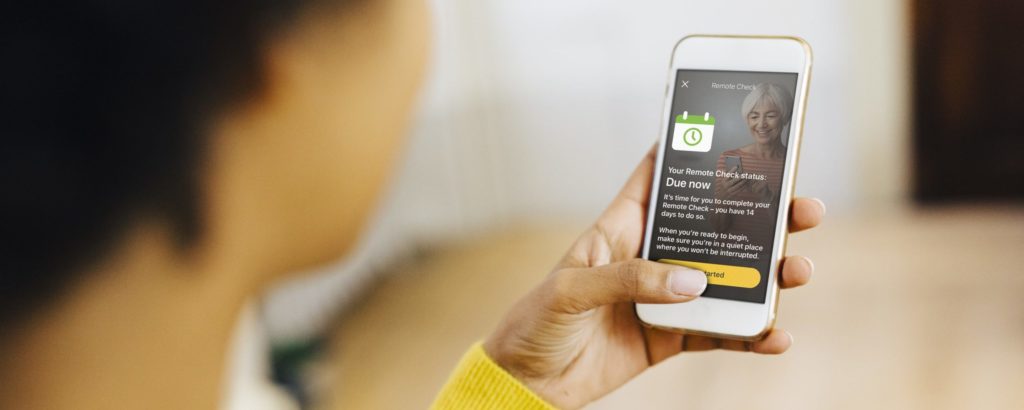Patience, practice, perseverance and having a positive attitude have been key to learning to listen again after activation, says Cathy, who received her first cochlear implant two decades ago and then her second five years ago. “I believe in the 4 Ps.”
“I think it was easier the second time because I knew what to expect,” says Cathy, a retired special education teacher who volunteers as a court-appointed special advocate in the juvenile court system. Cathy, who lives in Ohio, USA, has two CochlearTM Nucleus® 6 Sound Processors.
“I did auditory training with an AVT [auditory-verbal therapist] for about a month, then did the rest on my own. I found the learning curve to be shorter. I think I was hearing well bilaterally within three months. I think my brain just had to get used to hearing sounds and speech from two CIs instead of one,” says Cathy.
As a Cochlear Volunteer since 2007, Cathy has been sharing her tips with other recipients for learning to listen again after activation. Here are her top five tips:
- Be realistic
“Don’t expect to hear speech right away. You will hear sounds. One needs to have patience because it can take a while to hear speech clearly. The learning curve is different for everyone. It depends on how much time and effort one puts into learning to hear with a cochlear implant. It’s not like a hearing aid where you will be able to hear instantly. The more you work at it, the more successful you will be.” - Use audio books and apps
“Listen to audio books while reading the same book to learn what words or sentences that you are hearing correctly and what you may be missing.”
She also suggests using one of the many listening apps available and advises choosing one which allows you to select different sessions and levels to make it easier or harder suit your personal needs. - Work with a therapist if possible
“It can be helpful to go to an AVT/Speech Therapist to help with speech and auditory training for the first few months. They will recommend appropriate apps that you can use for further training.”
If you live in an area without access to a therapist, digital apps can help make self-care possible. Self-managing your hearing loss is shown to be one of the key components of successful rehabilitation.1 - Work with your audiologist
“Attend all the initial mapping sessions with your audiologist. They will adjust your maps as needed to help you learn and adjust to hearing with a CI. Your audiologist is your best friend on your hearing journey. I like to keep a log of how you hear with each map. The audiologist can use this information to create the right maps for you.” - Be honest
“Tell your audiologist if there is a particular environment or situation that may be more challenging for you. For instance, I enjoy going to plays and musicals. I had my audiologist create a map just for this purpose. The nice thing is the mappings are all individualised for you. It is what works best for you. Your processor will not be mapped the same as another CI recipient. It is not one size fits all.”
What tips would you give to someone who has just had their first or second activation? Get in touch to tell us!
_____
References
- Convery E, Keidser G, Hickson L, Meyer C. The Relationship Between Hearing Loss Self-Management and Hearing Aid Benefit and Satisfaction. Am J Audiol. 2019;28(2):274-284. doi:10.1044/2018_AJA-18-0130
© Cochlear Limited 2021.
Please seek advice from your health professional about treatments for hearing loss. Outcomes may vary, and your health professional will advise you about the factors which could affect your outcome. Always read the instructions for use. Not all products are available in all countries. Please contact your local Cochlear representative for product information.
Views expressed are those of the individual. Consult your health professional to determine if you are a candidate for Cochlear technology.
ACE, Advance Off-Stylet, AOS, AutoNRT, Autosensitivity, Beam, Bring Back the Beat, Button, Carina, Cochlear, 科利耳, コクレア, 코클리어, Cochlear SoftWear, Codacs, Contour, コントゥア, Contour Advance, Custom Sound, ESPrit, Freedom, Hear now. And always, Hugfit, Hybrid, Invisible Hearing, Kanso, MET, MicroDrive, MP3000, myCochlear, mySmartSound, NRT, Nucleus, Osia, Outcome Focused Fitting, Off-Stylet, Profile, Slimline, SmartSound, Softip, SPrint, True Wireless, the elliptical logo, and Whisper are either trademarks or registered trademarks of Cochlear Limited. Ardium, Baha, Baha SoftWear, BCDrive, DermaLock, EveryWear, Human Design, Piezo Power, SoundArc, Vistafix, and WindShield are either trademarks or registered trademarks of Cochlear Bone Anchored Solutions AB.
iPhone, iPad and iPod touch are trademarks of Apple Inc., registered in the U.S. and other countries.




